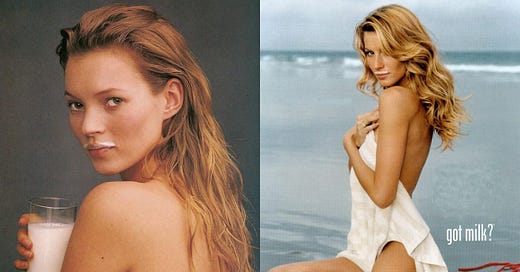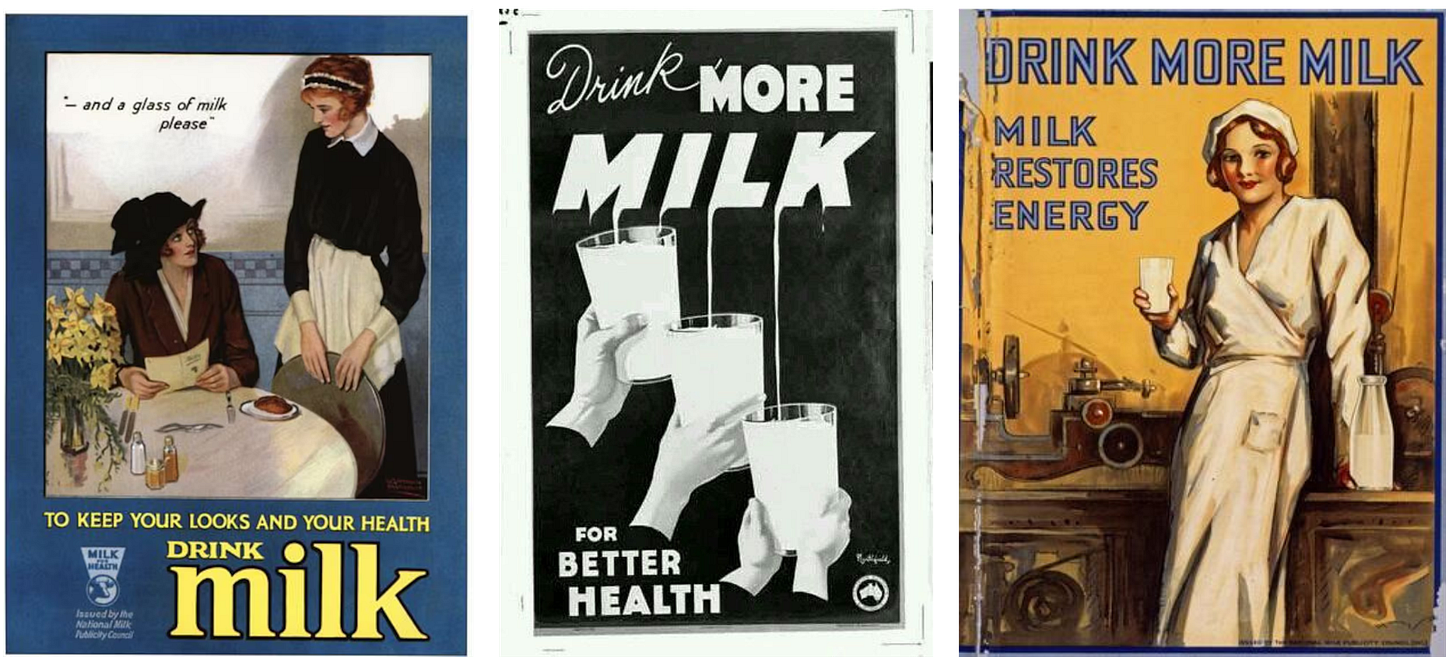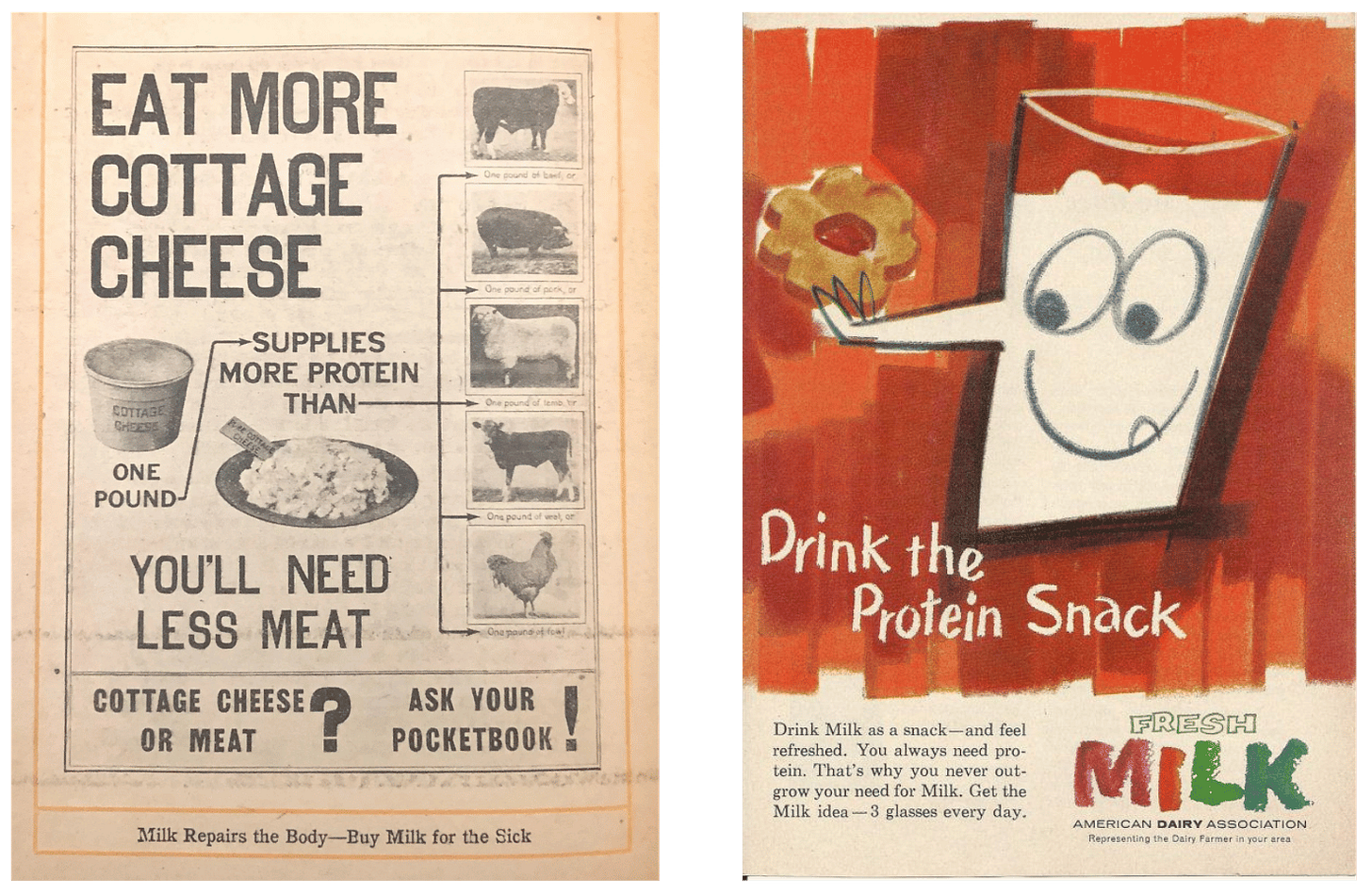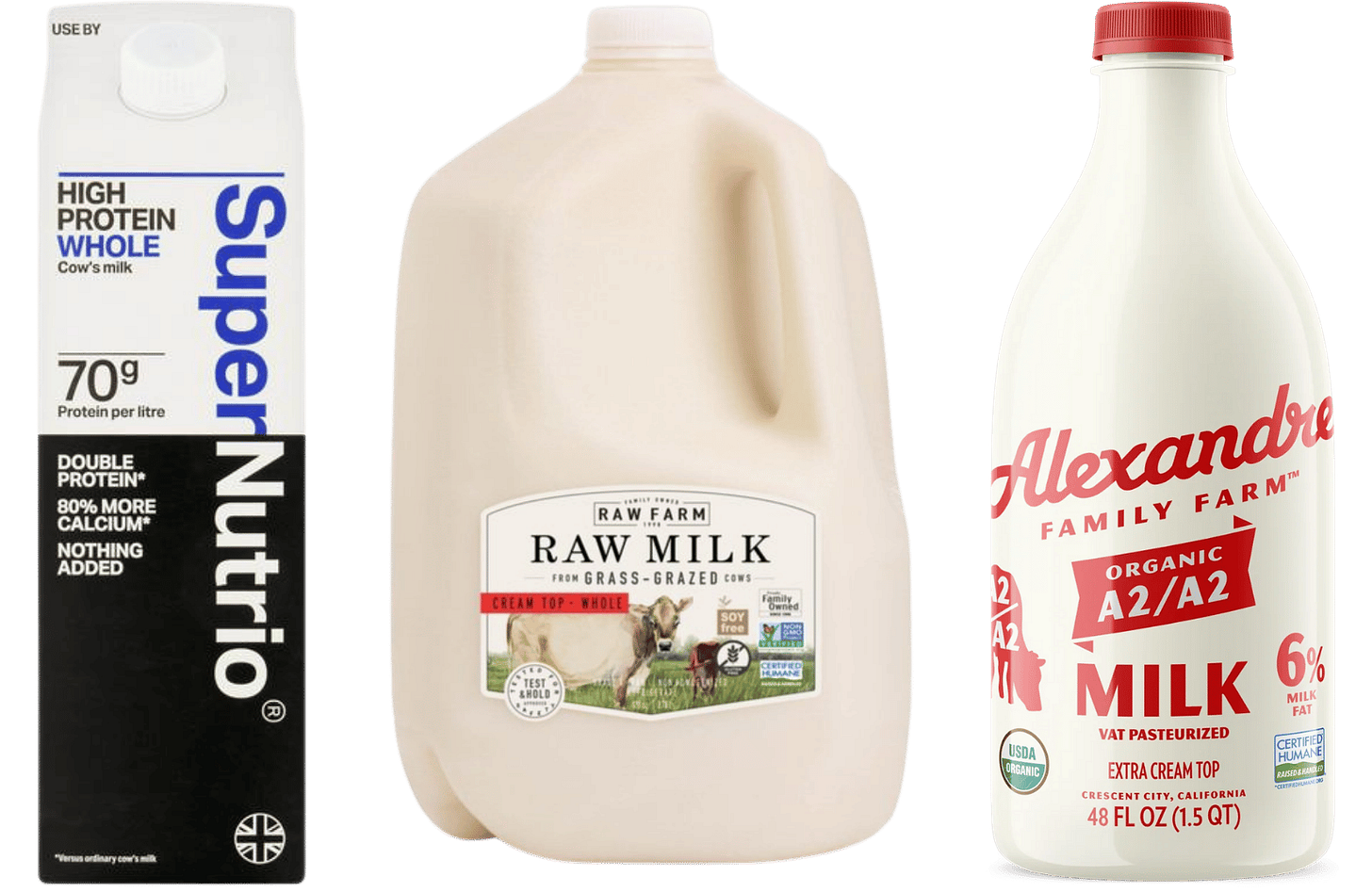One of the biggest misconceptions in recent years has been the narrative that plant based milks ever became a threat to real milk, this was never the case of course, as real milk sales eclipse plant based ($800B cow milk global market vs. $20B plant based global market)—the biggest enemy of milk? Diminishing occasions in our modern lifestyles. The turn of the 19th century saw milk become a quintissential staple in American households, a few convergences that led to milk’s century old supremacy post pasteurization include: the permeation of refrigerators during the 1920s-30s (with most households having one by the 50s) the invention of cereal as we know it, and Government intervention all happening almmost simultaneously.
The origins of the modern cereal are a lot more controversial than the sugar and trash ingredients it comes along with, John Harvey Kellogg was a Seventh Day adventist who believed that bland foods were the perfect way to counteract masturbatory urges, something that Sylvester Graham similarly believed in when coming out with graham crackers. Kellogg served his newly invented corn flakes at his sanitarium (a health spa) and it was accompanied with milk because of its ability to soften it as well as a balancing out the carbs with protein and fat, making it a more rounder, filling meal.
Refrigerators became a lot more affordable around World War II thanks to better manufacturing capablilties as well as the push for electricity in rural areas thanks to Roosevelt’s New Deal, eventually replacing the ice box, which was a non- electric, insulated box that was cooled by ice blocks. Around that time, cereal began to increase in popularity, thanks to its convenience and health halo, it gave birth to more companies like Post and General that helped further popularize cereal and milk as the ideal American breakfast.
By the 1940s, the US government the USDA began promoting milk as a nutritional staple, there’s so many vintage ads that show that kids were protein maxxing on milk for almsot a century before TikTok, specially since school milk programs had been introduced during the Great Depression as a way to support farmers during the recession as well as make sure children were fed properly (this is also the background story for the modern Santa eats cookies and milk narrative, it was seen as a sign of abudance) In 1946, President Truman introduces the National School Lunch Act, mandating the inclusion of liquid milk in federally funded meals, further cementing milk as an institution in American households.
By the 70s, milk production has increased so much that it even led to a surplus, forcing the government to intervene once again, this time it was subsidizing the dairy industry to help stabilize the prices, with deregulation of children’s adversting during the 80s and 90s, the California Milk Processor Board introduced the iconic Got Milk campaigns, in efforts to bring a cultural cache to milk via use of celebrities from actors and music bands to supermodels. By this point, we are eating milk for breakfast, lunch and dinner, you eat your cereal with milk, have your PB&J sandwich for lunch with a glass of milk that paired perfectly with it, you dunked your cookies in milk for a snack, and had a warm glass of milk before bed as a way to help you sleep better, milk dominated from AM to PM.
By 2000s, the conversation around milk and dairy had begun to change thanks to increase conversations around lactose intolerance, the ethics around dairy farming as well as the environmental impact of real milk—their popularity in popular culture burst, in the same way milk bubbles as it heats up and eventually pops. The 2010s saw the rise of almond, soy and oat milk as the alternative to your standard glass of milk, it also saw Millennials cross the “better-for-you” chasm, that involved undoing a lot of the indoctrination they came across growing up. Cereal as a food staple is in decline (Kellogg’s literally spun off its cereal division) as carbs and sugar become demonized, we’d rather intermitten fast or look for more protein-rich filling alternatives, instead of orange juice or milk glasses we’re scooping protein powders into smoothies or whisking supplement powders like collagen and prebiotics into water, we’re making sure we’re hydrated after our sauna sessions and HIIT workouts, so we’re mostly drinking electrolytes throughout the day, we’re not really snacking on cookies because it’s not considered a healthy, and creamers have replaced milk in coffee thanks to its culturally relevant flavors like “pumpkin spice”.
As we came into the 2020s, we started to see a shift in dairy in cultural conversations, the soyboy meme spreads the idea that alt-milks are emasculating and
notes that “hot girls drink whole milk”, Oatly IPO flops and investors sue, and the conversation about plant based milks and seed oils begins to take a toll on alt-milk momentum as a whole, to the pointing of bringing it to a halt. We wrote an entire deep dive on the pendulum swinging back on real dairy and being fueled by movements like MAHA, but as dairy regains cultural relevance once more, will it be enough to reinstate it as a habit in our daily lives? Most of BigDairy does not benefit from the rise of controversial drinks like raw milk, even as some coffee shops have begun embracing it, hot spots like Erewhon known for its coveted luxurious smoothies mostly still use alt-milks, and there’s no real milk equivalent to “barista milk” —though there are now a myriad of milks that boast protein as we continue to experience its boom, Fairlife milk has literally become Coca-Cola’s saving grace, so can milk, the original functional drink, find a way to increase its ocassions focusing on specific subsects like protein?Brands like Alexander, Laurel’s and Alec’s are breaking groundway in the A2 space, allowing for those who have lactose intolerance to find a better alternative that is still actually milk. Chobani’s invested $1B in a dairy plant this year, and Gen Alpha seems to embrace milk in a way that GenZ has not, see the rise of crunchy teens, it’s crazy to see them eating steak and milk like its the 50s again. If drinking milk is truly cool again, what will the new generations pair it with?
Croissants? Sardines? Baja Blast?!
Milk doesn’t need your redemption, but increased occasions, what will they be?









Milk is definitely back!!
Thank you